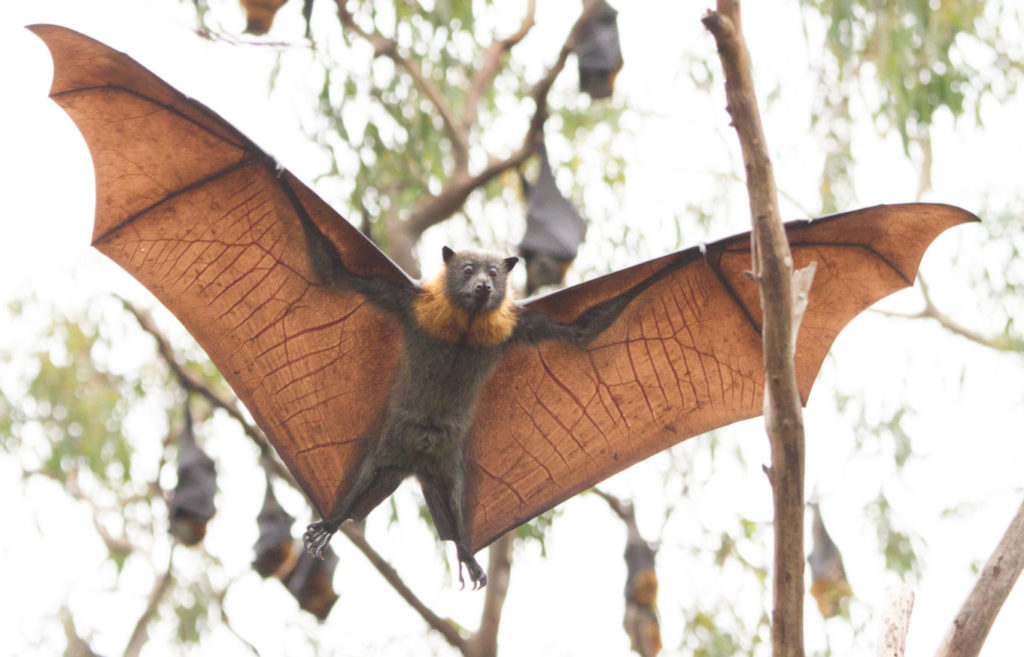
Blackbutt Forest and Croom Reserve in Shellharbour will soon be bolstered with the establishment of 30,000 flowering trees and shrubs to provide additional food for the region’s endangered grey-headed flying-fox colony.
In partnership with Shellharbour City Council, the Great Eastern Ranges (GER) will regenerate and reconnect feeding habitat and engage and educate the community on the many benefits the mega bats bring for people and nature. Funding for the project is being provided through the Local Government NSW Flying-fox Habitat Restoration Grant Program.
CEO of GER, Gary Howling, lives in the region and is a passionate advocate for the reserves. He describes Croom Reserve as, “a little jewel in the landscape that people overlook”.
“The reserve supports the migration of many of our bird species up and down the coast,” said Gary.
“It’s the largest block of Illawarra Lowland Grassy Woodland in the region, a threatened ecological community.
“It’s such an important habitat, and the plantings will benefit a whole range of different species locally, as well as those who move through the region on a seasonal basis.”
Gary says that the plantings will also serve to reconnect habitat in the reserves, which is currently divided by major roads and fences.
Apart from the grey-headed flying-fox, Gary said the reserves are also frequented by local birds such as the eastern yellow robin, fairy wrens, butcherbirds, lorikeets, the spotted pardalote and several types of thornbill, seasonal visitors such as grey and rufus fantails, golden whistlers and rose robins, and even the occasional eastern grey kangaroo.
The project will also serve to reduce conflict with local residents by drawing flying-foxes away from food trees in contentious areas.
The new plants will be established more than 75 metres away from any houses to minimise the potential for noise disturbance.
There will be opportunities for community involvement in the project, through volunteering on tree planting days, educational events, citizen science activities, and more.
This project is part of the Flying-fox Habitat Restoration Program assisted by the New South Wales Government through its Environmental Trust in association with Local Government NSW.



 Media release
Media release